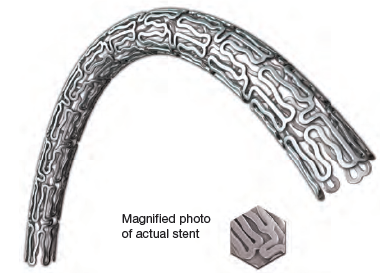XIENCE Alpine Everolimus Eluting Coronary Stent Systems (XIENCE Alpine EECSS), XIENCE Sierra Everolimus Eluting Coronary Stent Systems (XIENCE Sierra EECSS), XIENCE Skypoint Everolimus Eluting Coronary Stent Systems (XIENCE Skypoint EECSS) – P110019/S115

This is a brief overview of information related to FDA’s approval to market this product. See the links below to the Summary of Safety and Effectiveness Data (SSED) and product labeling for more complete information on this product, its indications for use, and the basis for FDA’s approval.
Product Names: XIENCE Alpine Everolimus Eluting Coronary Stent Systems (XIENCE Alpine EECSS), XIENCE Sierra Everolimus Eluting Coronary Stent Systems (XIENCE Sierra EECSS), and the XIENCE Skypoint Everolimus Eluting Coronary Stent Systems (XIENCE Skypoint EECSS)
PMA Applicant: Abbott Vascular
Address: 3200 Lakeside Drive, Santa Clara, CA 95054 USA
Approval Date: June 25, 2021
Approval Letter: Approval Order
What is it?
The XIENCE family of Everolimus Eluting Coronary Stent Systems (XIENCE Alpine EECSS, XIENCE Sierra EECSS, XIENCE Skypoint EECSS) is intended to treat a narrowed blood vessel (coronary artery) caused by coronary artery disease. Each system consists of a cobalt chromium alloy metal stent and a catheter delivery system. The stent is coated with the drug everolimus and a polymer (PBMA and PVDF-HFP) coating to help deliver the drug at a controlled rate.
This approval expands the indications for use to include patients at high risk for bleeding.
How does it work?
A physician inserts the stent’s delivery balloon catheter into a blood vessel in the patient’s arm or groin. The stent is then positioned at the site of the coronary artery and the balloon is inflated, which expands the stent and presses it against the coronary artery wall. The stent remains permanently implanted within the coronary artery to help keep the artery open and improve the supply of blood and oxygen to the heart. The drug (everolimus) is released over time from the XIENCE stent surface into the coronary artery wall to help prevent re-narrowing of the coronary artery, which sometimes occurs after a stent is implanted.
When is it used?
The XIENCE stent systems are indicated for use in patients who have a narrowing in their coronary arteries and are at high risk for bleeding due to previous conditions including, but not limited to, advanced age, the need for chronic or lifelong anti-clot medications (anticoagulants such as warfarin, heparin, or others), a history of major bleeding, a history of stroke, and reduced kidney function (renal insufficiency).
What will it accomplish?
In the primary clinical studies, which were titled XIENCE 28 and XIENCE 90, 3,652 patients at high risk for bleeding were treated using a XIENCE stent. Most stopped taking one of their two antiplatelet therapy medications (aspirin or P2Y12) after one month (XIENCE 28) or three months (XIENCE 90). The results demonstrated that patients with the stent who stopped taking one medication after the time period defined in the study but kept taking another medication were not at increased risk of death or heart attack (myocardial infarction) during the first year (XIENCE 90) or six months (XIENCE 28). Additionally, these patients had a similar frequency of blood clots forming blockages inside the stent (rate of stent thrombosis) during the first year (XIENCE 90) or six months (XIENCE 28) compared to reports for other drug eluting stents.
When should it not be used?
The XIENCE family of stent systems should not be used in:
- Patients who cannot receive anticoagulation or antiplatelet medications for any reason, including those who have an allergy or hypersensitivity to these drugs.
- Patients who cannot be exposed to or have a hypersensitivity to the following:
- Everolimus or similar compounds
- Stent components including cobalt, chromium, nickel, tungsten, methacrylic polymer, and fluoropolymer
- Contrast agents used to improve the visibility of blood vessels during imaging
